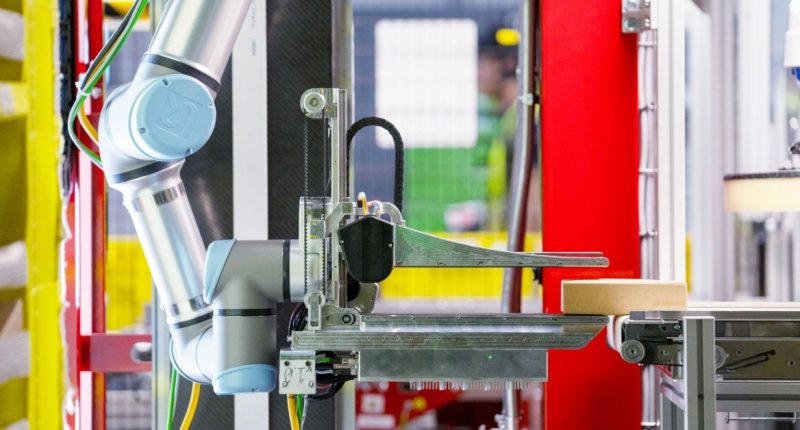Share this @internewscast.com
Amazon has introduced a new warehouse robot called Vulcan, which is enhanced with AI and equipped with a sense of touch. This innovative feature enables Vulcan to handle about 75% of the tasks of picking and placing items in Amazon’s warehouses, a job that was mainly carried out by human employees until now.
According to Aaron Parness, Amazon’s director of applied science, in a press release, “Vulcan represents a major step forward in robotics. It doesn’t just see its surroundings; it can feel them, providing capabilities that were previously unattainable for Amazon robots.”
Although Vulcan is not Amazon’s first robot that can handle picking tasks, it is distinct due to its ability to delicately and skillfully handle items within the fabric-covered storage compartments unique to the company. These compartments are transported by a different group of robots within the warehouses. Vulcan features an arm, described by Amazon as resembling a ruler attached to a hair straightener, to rearrange stored items and integrate new ones without causing damage, thanks to its force sensors. Another arm equipped with a suction cup is used to extract items from the compartments, supported by an AI-driven camera that ensures only the desired item is picked up.
AI is integrated throughout Vulcan’s systems, which were trained on physical data including touch and force feedback. It also “learns from its own failures,” building up an understanding of how different objects behave when touched, so Amazon hopes Vulcan will become more capable over time.
Amazon says that Vulcan is already operational in Spokane, Washington, and Hamburg, Germany, where it’s processed half a million orders so far, and is primarily being used to pick items at the top and bottom of the eight-foot fabric stacks. That saves human workers from bending down or fetching ladders, which Amazon argues will improve worker safety and reduce injuries. Vulcan can apparently pick around 75 percent of Amazon’s stock, and will alert a human when it finds something it can’t pick up. “Vulcan works alongside our employees, and the combination is better than either on their own,” says Parness.
“I don’t believe in 100 percent automation,” says Parness in an interview with CNBC that demonstrates Vulcan’s capabilities. “If we had to get Vulcan to do 100 percent of the stows and picks, it would never happen.”
That could be cold comfort to the company’s one million warehouse workers, who may soon be outnumbered by the 750,000 robots Amazon says it’s deployed over the years. Vulcan will now join them, rolling out across Europe and the United States “over the next couple of years.”







